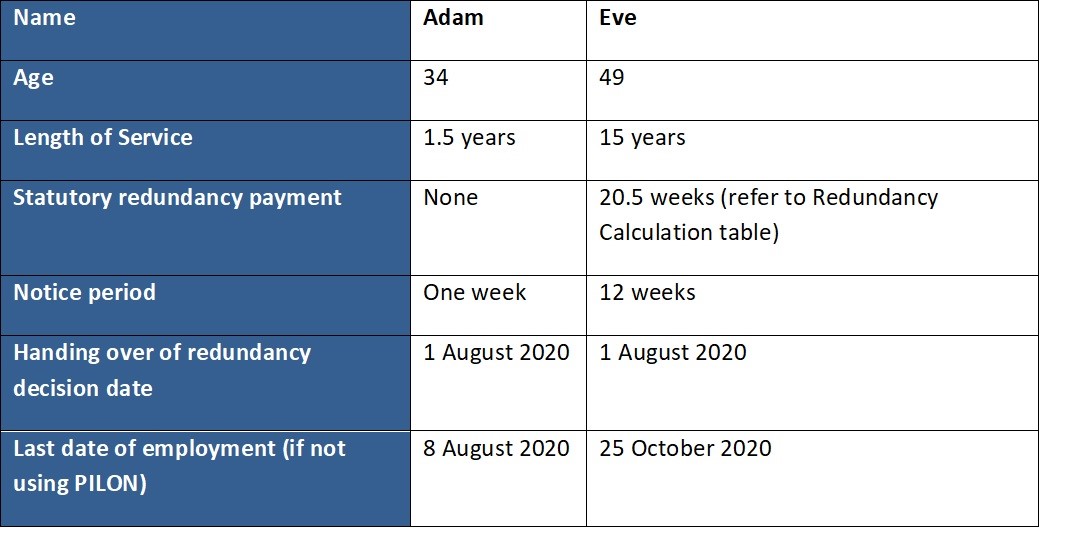Exactly How to Handle Redundancy Pay If Company Goes Bust: Secret Details for UK Workers
Exactly How to Handle Redundancy Pay If Company Goes Bust: Secret Details for UK Workers
Blog Article
Investigating the Interaction Between Business Redundancy and Business Adaptability for Future Development
In the dynamic landscape of today's organization globe, the elaborate partnership in between company redundancy and business versatility arises as an essential aspect for continual growth and success. Business often deal with the difficulty of striking a delicate balance between maintaining a level of redundancy to reduce threats and fostering flexibility to respond quickly to the ever-evolving market needs.
Importance of Business Redundancy
Firm redundancy is a vital aspect that enhances organizational strength and mitigates operational dangers. By incorporating redundancy actions within the business framework, firms can better endure unforeseen disturbances and variations in business environment. Redundancy acts as a calculated buffer, allowing business to adapt and react efficiently to unanticipated difficulties without compromising essential operations.
One key facet of the importance of business redundancy is its role in guaranteeing connection throughout times of dilemma. When encountered with abrupt adjustments or emergencies, repetitive systems, resources, or personnel can tip in to preserve important functions and protect against prevalent interruptions. This connection not just safeguards the company's track record and customer count on but additionally lessens financial losses and functional downtime.

Approaches for Business Versatility

Another critical strategy is buying innovation and facilities that can support versatility and scalability. Carrying out electronic tools, automation, and information analytics can improve operations, boost effectiveness, and provide valuable insights for educated decision-making. In addition, developing versatile organizational frameworks that enable quick changes to market dynamics and client requirements is crucial for staying affordable in a rapidly progressing go to website environment. By proactively determining potential disturbances and possibilities, companies can proactively adapt and her response prosper in an ever-changing company landscape.
Balancing Redundancy and Adaptability
Accomplishing a harmonious stability in between functional redundancy and business flexibility is vital in browsing the intricacies of a dynamic business setting. Striking the ideal equilibrium in between redundancy and flexibility is a fragile process that needs a deep understanding of the organization's goals, industry dynamics, and threat resistance.
To achieve this equilibrium, business require to conduct routine assessments of their operations to identify areas where redundancy is necessary for danger reduction and where flexibility can drive technology and development. Applying adaptable structures, fostering a culture of continual knowing and renovation, and urging open interaction throughout all degrees of the company are vital strategies to balance redundancy and flexibility properly. By straightening these 2 important elements, business can position themselves for lasting growth and success in an ever-changing organization landscape.
Study on Adaptation Success
In examining circumstances of successful business adaptation, it becomes obvious that the interplay in between operational redundancy and flexibility is a specifying variable in forming durable services. A DVD rental service, Netflix showed impressive flexibility by transitioning right into a streaming system when digitalization interfered with the industry. These situation studies underscore the importance of functional redundancy combined with business versatility in promoting lasting growth and competitiveness.
Structure Strength for Future Growth
Structure durability for future development requires a tactical placement of functional processes with market dynamics and emerging fads. Firms should adapt to changing atmospheres by fostering a society of adaptability, innovation, and continual renovation. Resilience involves not only getting better from problems but also proactively preparing for future challenges. One vital aspect of structure strength is spending in robust risk administration approaches to alleviate prospective disruptions. This includes scenario preparation, diversifying supply chains, and developing contingency strategies for various backups (who pays redundancy money).
In addition, fostering strong connections with stakeholders, such as clients, workers, suppliers, and the area, is necessary for weathering uncertainties get redirected here and preserving depend on and assistance throughout rough times. Effective interaction and openness play an essential role in building resilience, as they assist straighten expectations and promote cooperation in browsing unpredictabilities.
Moreover, companies require to focus on understanding and advancement initiatives to upskill workers and furnish them with the essential devices to adapt to altering scenarios. By buying their workforce, firms can enhance their flexibility and agility, ultimately enhancing their strength for lasting future development.
Final Thought

In the vibrant landscape of today's company world, the elaborate partnership between firm redundancy and business adaptability arises as an essential factor for continual growth and success. Business typically deal with the difficulty of striking a fragile equilibrium in between keeping a degree of redundancy to alleviate threats and cultivating flexibility to respond swiftly to the ever-evolving market needs.To attain this equilibrium, business require to conduct routine analyses of their procedures to recognize areas where redundancy is necessary for threat mitigation and where flexibility can drive technology and growth.In verdict, the interplay in between company redundancy and organizational flexibility is crucial for future growth. Structure durability via a mix of redundancy and versatility will make sure that companies are prepared for the challenges of the future.
Report this page